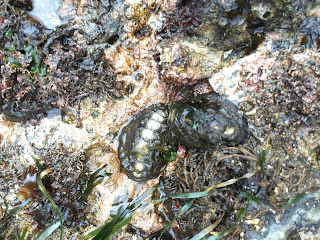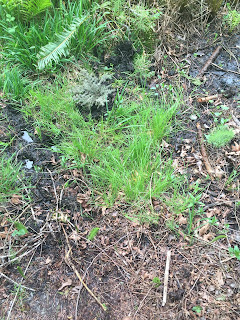April 23th-24th the weather was sunny initially and
then started raining Saturday evening. Sunday along the coast was cool, windy
and rainy most of the day.
Having never taken an environment class here at the UW or
really any class like it I was not sure really what to expect going into this
fieldtrip. My focus going into the weekend was to absorb as much as I possibly
could about the natural history of the area, given that it may be a while
before I would get the chance to visit Olympic National Park again. Needless to
say I was excited to take it all in.
We decided that we would first head out to the Marymere
Falls. Along the shady and damp understory there were many plants I was able to
identify from my time in Ravenna Park. There was an abundance of sword fern,
different from the lady fern because of its longer and narrower leaflets shaped
like a sword, and Devil’s Club, a plant with heftier stems covered in spines
and large green leaves with many lobes. While heading to the falls we saw
plenty of Douglas Firs, recognized by their cones, a lot of western hemlocks of
all sizes, distinguished by their uneven needles and on the shorter trees the
floppy top. Some other cool aspects of the understory that we saw were nursing
logs and an erratic boulder. As we started to get closer to the water fall we
saw there were more ferns and moss because of the dampness.
After the water fall we wanted to hike up to storm king
ridge. I did not anticipate, the severity of the slope we had to climb.
However, the view at the top of the mountain was absolutely worth it. I loved
seeing all of the large pacific Madrones on the sides of the steep hill, where
they could get a little more sunlight. Their shedding bark, large leaves, and
white flowers were stunning. I noticed that they were often seen on steeper
slopes where they could almost grow horizontally where they could get more.
Among other notable species, there were some western red cedars and some
yellows cedars. While on the way down the hill we saw an albino banana slug
too!































